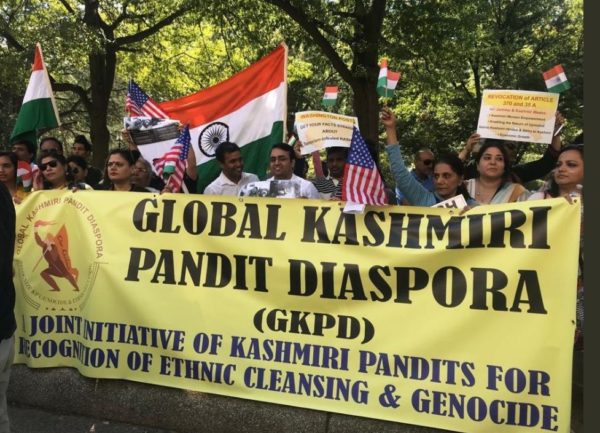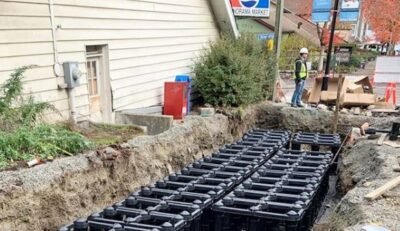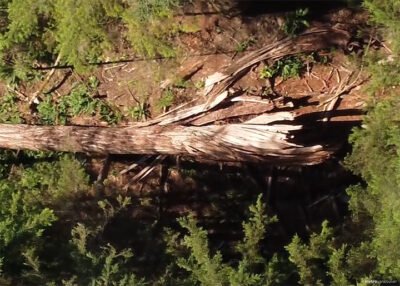A Led Zeppelin song titled ‘Kashmir’ will leave those familiar with the region puzzled. There is nothing in Kashmir of the sand and desert in the song. Instead, Kashmir has snow-clad mountains, lush meadows, streams and rivers. The song was actually inspired by a Moroccan landscape, thousands of miles away from Kashmir. Jimmy Page and Robert Plant must have imagined Kashmir too would be like Morocco.
Recent coverage of Kashmir in certain sections of international media could be as misleading as the Led Zeppelin song — though not as innocent.
Kashmir, or the Indian province of Jammu & Kashmir to be precise, has been in the news after Indian parliament revoked its semi-autonomous status, a temporary provision, on August 5. Since late eighties, India’s only Muslim-majority province has witnessed a struggle for a separate Islamist state with the support from neighbouring Pakistan. The ruling Bharatiya Janata Party had been promising for several decades that it would scrap the special status if it got the required numbers in the parliament. The party believes the special status promoted separatism and religious violence in the province and discriminated against minorities.
Expecting violence from militants and their overground supporters, the government imposed restrictions on communication and movement, locking down the whole province, and detained hundreds of politicians. Critics say India has illegally annexed the province and also against the wishes of Kashmiri people. A month later, restrictions are easing but it’s still not normal.
If you have read the news about Kashmir, you will get the impression that Kashmir is the usual matter of a brutal state making a genocidal assault on an ethnic people to erase their identity and culture. In this case, a Hindu nationalist India cracking down on its only Muslim-majority province.
But you may not have been told the whole truth. A meticulously sanitised narrative in some media reports is silent on a big issue that has been troubling Kashmir for long — the jihad waged by Islamist terrorists sponsored by neighbouring Pakistan.
In a rush to find a Palestine in Kashmir and an Israel in India — or let’s say a Moroccan desert in the meadows of Kashmir — some of the international coverage of Kashmir actually appears as an exercise in whitewashing the jihad. When journalists are not trying to project jihadi propaganda, they leave out important details which distorts their reports.
Who exactly are the Kashmiris? What do they want? What is their struggle? Answers to these questions are complex but some media reports may just avoid addressing them so that their state-against-people narrative is not knocked out of place.
This is more or less the impression a reader would get from the recent Kashmir narrative in the international media — Kashmiri ethnic people have been struggling for their right to self-determination so that they can have full statehood independent of India; India is an occupying force which has been suppressing the native insurgency with its military might; now it has illegally annexed the province against the wishes of the native people; restrictions on communication and movement have turned the region into a veritable prison; Indian military is killing and torturing peaceful protesters; and India is planning to settle Hindus in the native land of Muslims to outnumber them.
All this is not totally untrue. But it’s not the whole truth either.
Kashmiris have diverse views
Most media reports focus on just one region in the province — the Kashmir valley, where the majority population is Sunni Muslim and which is the main jihadi battlefield. In other regions, Jammu and Ladakh, majority population is Hindu, Buddhist or Shia Muslim.
Why do most media reports that claim to tell you what Kashmiris think about Indian government’s move emanate only from the Kashmir valley, rather certain areas in the valley? Because if journalists reach out to people in other parts of the province, they may not get the kind of stories they are looking for — the Hindu nationalist state brutalising a Muslim community in its homeland.
Except in several parts of the Kashmir valley, a lot of people in other parts have openly supported India’s move. A lot many have mixed feelings. It’s possible a large number of them are not speaking out what they actually think for fear of jihadis. A few have have already been killed for saying or doing what jihadis don’t like.
So when a report says Kashmiri people are against India’s move, it’s a lie. It’s only some sections of Kashmiri people not all of them.
It’s not an ethnic insurgency
Most reports create the impression that the insurgency is a Kashmiri ethnic movement. That’s an incorrect description because the insurgency has no support from other Kashmiri ethnic groups such as Buddhists and even several sections of Muslims. Hindus, who were driven out of the valley by the jihadis, have the same ethnicity as Muslims. The correct description of the insurgency is a religious war waged by mostly by a section of Sunni Muslims. Since it has worldwide support from sympathisers a lot of whom don’t sound like jihadis — politicians, writers, journalists, overground workers of militant outfits, etc. — the religious war is largely seen as a just struggle by the native Kashmiris, a wrong descriptor that includes Kashmiris who are against the jihad and don’t want to secede from India.
So anyone supporting the insurgency — be it a top American academic or a celebrity writer — is not advocating for the rights of the Kashmiri people but supporting the demand for creation of an Islamist state by a section of them.
A number of reports might also suggest that the insurgency is a struggle by Muslims to preserve their homeland. The fact is the Kashmir region is not the original home of Islam. It is the birthplace of Mahayana Buddhism and Hindu Tantra philosophy, its history going several millennia back to the Hindu Vedic period. A centuries-long Muslim conquest of the region led to a large number of Hindus and Buddhists converting to Islam. Now a section of these Muslims wants an Islamist state after driving out native Hindus.
How the jihad began
The biggest hole in the international media coverage of Kashmir is the ethnic cleansing of Hindu natives of Kashmir. Almost all the Hindus — more than 300,000 — were driven out of the valley by Islamist terrorists 30 years ago after a series of abductions, rapes and murders.
While the Islamist conquest of Kashmir began centuries ago, the current jihad started in the late eighties with neighbouring Pakistan training and arming militants and pushing them in. A number of Kashmiri Hindus, called pandits, were murdered and raped to force them out so that an Islamist state could be created. Threats were blared out from loudspeakers in the mosques and letters of warning were posted on walls. A popular slogan among the jihadis in those times meant they wanted to make a Pakistan (a Muslim state) out of Kashmir without Hindu men but with their women.
The most macabre incident of those days was abduction, rape and murder of a Hindu woman Girija Tickoo whose body was split with a carpenter’s saw. Hindus were offered three choices by jihadis — “ralive, chaliv ya galive” (convert to Islam, leave Kashmir or suffer). Hundreds of thousands of Hindus left for the Jammu city of the province where they lived in tents or one-room homes for years.
Of course, you will find narration of these events in major international media outlets. But it’s sporadic and rarely finds mention where it matters. For example, few journalists would tell you while writing about the insurgency that it’s built on ethnic cleansing of a native minority. Again very few would tell you that the militants are fighting for a shariah state. They will never mention the slogans raised by protesters which betray their jihadi ideology.
When the lockdown began a month ago, BBC and Al Jezeera showed a video of a protest to counter the Indian government’s claim that no one was protesting against its move. What the brave reportage failed to mention was that the protesters in the video were carrying flags of ISIS and Hizbul Mujahideen. The jihadi protest was passed off as a peaceful march held by Kashmiri masses against Indian occupation. Across international media, you will notice a compulsion to whitewash the jihad in Kashmir.
Before the jihad began in Kashmir three decades ago, Hindus and Muslim had lived in harmony for long periods and even forged an interfaith tradition in which some Muslim mystics had large following among Hindus too. With their radical interpretation of Islam, the jihadis did not approve of such traditions. In 1995, Pakistani jihadi militants burnt down a shrine dedicated to Nooruddin Noorani, called the patron saint of Kashmir, who is also revered by Hindus.

The left-liberal hypocrisy
If you hear a left-liberal protesting against India revoking partial autonomy of Jammu & Kashmir, you will not find anything amiss — until you know the legal implications of the move. After its full integration with India, the whole of Indian constitution will apply to the province which earlier had its own laws too that discriminated against several minority groups.
Now immigrants, LGBTQ, women, minorities and the lower-caste people will get their rights which they were not entitled to under the province’s own laws. Earlier, Kashmiri women who married outside the province would forfeit several of their rights. Homosexuality was a criminal offence. Dalits, the lower-caste people, were not entitled to jobs. Immigrants who crossed over from Pakistan more than half a century ago did not have voting rights.
Imagine American left-liberal icon Alexandria Ocasio-Cortez arguing that immigrants should not get voting rights. Or another left-liberal icon Ilhan Omar arguing that Muslims should not be allowed to settle in Minnesota because that will change the religious demography of the Christian-majority state. But similar arguments on Kashmir are being freely offered in media. Many of those who are all for religious diversity in the west would rather prefer Kashmir to maintain a Muslim identity. They are afraid India will now settle Hindus in Jammu & Kashmir. When it comes to Kashmir, supporters of open borders in the west have suddenly started arguing against open borders even inside a country.
When torture is a bigger story than murder
You must have come across a number of reports claiming Indian forces beating up and torturing Kashmiri youths after the communication blockade was imposed. Police have contested most of these claims. However, you will have little reason to believe the police in a conflict zone.
But what could escape a reader is that a lot of international media has done in-depth reporting on claims of beatings and torture by the police but little on people who have been killed in the same period. Even a student in a journalism school knows deaths are higher in news hierarchy than injuries. What kind of journalism will take you hundreds of miles to a conflict zone where you will ignore murders but focus on claims of beatings?
Why does international media avoid in-depth reporting of recent murders? Because that would drill holes in their state-against-people narrative.
You will read little about two Gujjar Muslims killed by jihadis for supporting the Indian move. No journalists approached their families to know their stories. Journalists did not want to know why these Muslims back India, nor did they want to probe how they manage to live under constant threat from jihadi militants. No one interviews their family members. But claims of beating and torture by police will attract mega coverage.
When Indian government claimed that people were not protesting its integration move, many news outlets showed videos and photos of protesters throwing stones at police. However, they didn’t show half that zeal in telling the readers about people — again fellow Muslims — killed by these stone-throwers. Murder of a Muslim truck driver who was killed by jihadi protesters with stones was dismissed as an accident. If the journalists wanted they could find many people injured by jihadi protesters. A Muslim shopkeeper who was killed, again by jihadis, for daring to open his shop against their diktat was almost a non-news for international media. News of militants shooting at a Muslim family, also injuring a two-year-old girl, a few days ago was just that, small news, and in most cases not even fit to be reported. But if a protester dies of his pellet injuries (one died recently), his death will sure be reported in detail.
An investigation into killings of fellow Muslims by jihadis could have added an interesting angle to the Kashmir coverage. But what’s the use of angles when stories have to be force-fit into a narrative.
The jihadi militants do not want normalcy to return to the province because that would mean Muslim masses having accepted India’s move. So they are killing fellow Muslims who step out of line. These killings have been downplayed in international media because they introduce a shade of gray in the high-contrast narrative of a Hindu nationalist India cracking down on a Muslim-majority state.
For the same reason, you will rarely see reports in the international media on how Kashmiri Muslim youths queue up for recruitment in the Indian army. That will not help the portrayal of India as an occupying force in Kashmir.
A diversity of victims
In the three decades of unrest, more than 50,000 people including security personnel, militants and protesters have likely been killed in the province. Curfews, communication bans, barbed wires, bunkers, stone-throwing, bomb blasts and landmines have become parts of daily life.
The Kashmiri Muslims are as much the victims as the Hindus who were driven out by jihadis. Decades of jihad meant a large number of Muslim youths joining militants and getting killed. It also meant a reign of terror by militants in which whoever dared to differ was killed. It also brought on a crackdown by police and military.
Indian security personnel have been often accused of rape and murder and also been tried and convicted in several cases of human-rights violations. As in all conflict zones, many such violations go unpunished or end up in acquittals.
The provincial police include a large number of Kashmiri Muslims who and their families are always on target of militants.
Not all Kashmiri Muslims back jihad. However, decades of militancy have meant that if you dissent you will be branded an Indian agent and pay with your life. A Muslim youth was killed last year by militants for joining Indian army. Aurangzeb had defied jihadis while living right in their hotbed of Shopian. No journalistic investigation told you why Muslims were defying jihadis by joining Indian army. Aurangzeb was one of thousands Muslim youths who had queued up for recruitment in Indian army and they still do. This year, Aurangzeb’s two brothers — Mohmmad Tariq and Mohmmad Shabir — too defied the jihadis and joined Indian army. They will be part of the counter insurgency force in Kashmir.
You will rarely hear stories of Muslims who are victims of jihadis and those who have guts to challenge them.
Jihadis have killed even soft secessionists and mainstream political leaders. International media will spill a lot of ink on detention of local politicians by Indian government but rarely investigate when they are killed by militants. The game of death in Kashmir is so warped that even many politicians who back jihadis prefer to get security guards from Indian forces.
The Kashmir narrative in the international media often paints a stark picture of a Hindu India oppressing a Muslim Kashmir. While it does make for easy and interesting stories, it emboldens the jihadis and their supporters and goes to justify religious violence. It also shuts up native Muslim voices that dissent with the jihadis. How would they oppose the jihadis when eminent professors, writers and journalists are supporting them in the west?
One result of branding all Kashmiri Muslims as anti-India by the media is that many of them are beaten up on slight suspicion when they travel to other provinces.
Kashmir has many types of victims. Every narrative that lacks complexity does injustice to one or the other type. But then it’s hard to turn complex narratives into interesting stories.
Below is a letter written by American Kashmiri Hindus to the Washington Post protesting its biased coverage of the Kashmir issue:
Letter from Kashmiri Americans to Editor of the @washingtonpost welcoming Indian Govt's move for abrogation of Article 370 and 35A from Jammu & Kashmir. Kashmiri Americans hit out at WaPo for biased reportage on the Kashmir issue which doesn't take into account Pakistani terror. pic.twitter.com/Avylp7VyRr
— Aditya Raj Kaul (@AdityaRajKaul) September 8, 2019
Dharminder Kumar is a consulting editor at The Global Canadian. He is based in New Delhi.










I feel it is a biased narrative and a desperate attempt to tone down if not normalize the injustice being done to the Kashmiri Muslims by the Indian Govt.
I being a Kashmiri don’t agree with all of this and what’s happening is an attempt at ethnic cleansing of the region lead by a Hindu extremist Modi who already has the blood of Thousands of Muslims on his hands ! There’s no way to justify the fact that it’s been 43 days and people have been denied basic human rights ,medicine and food shortage,No schools and no internet and a few landlinesworking this is what is happening!
What happened to Kashmiri Pandits has always been condemned by the Kashmiri Muslims and let’s not forget that that was an extremist Muslim group of terrorists but this is the Govt. violating HR in broad daylight with no accountability. That was the past which doesn’t justify what was done but let’s all focus on what we can change now and ie. continue to bring the world attention to the current issue and avoid any distracting narratives from keeping us taking a stand for the right !